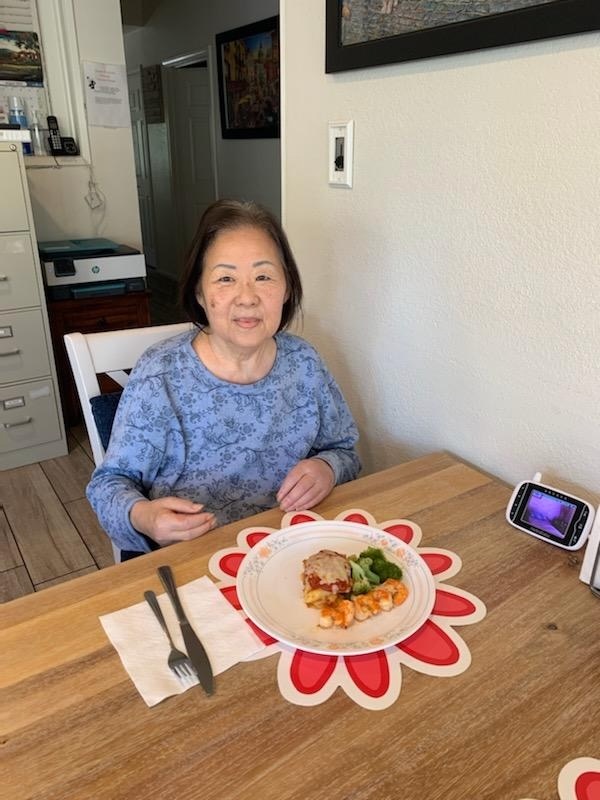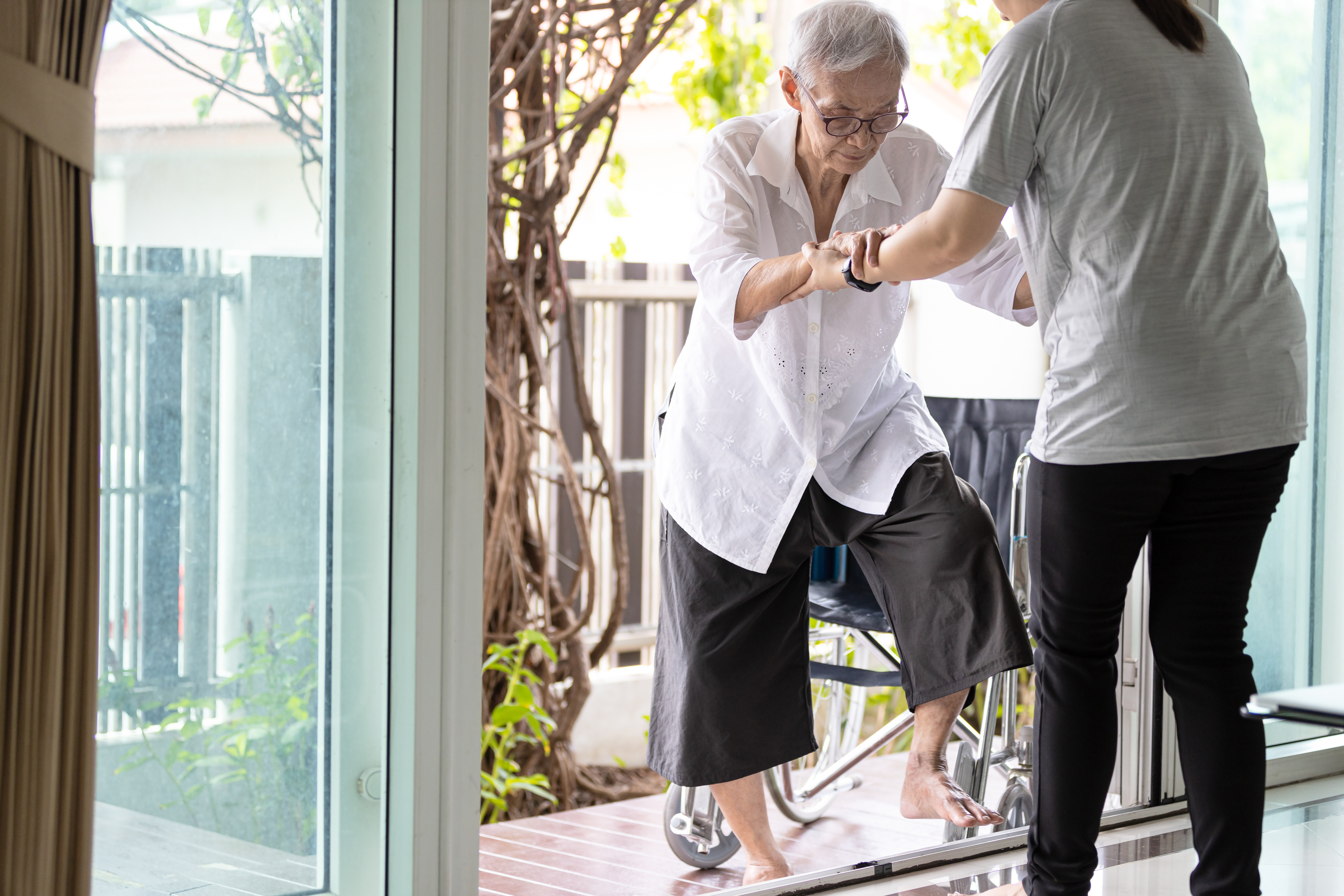How to Encourage Seniors to Stay Active: Tips for Caregivers
As a caregiver, one of the most important things you can do is encourage the senior in your care to stay active. Regular movement not only improves physical health but also boosts mental and emotional well-being. However, it’s essential to make sure exercise is safe, enjoyable, and tailored to their specific abilities.
In this blog post, we'll explore common struggles caregivers face when trying to get seniors to stay active and provide tips for incorporating more exercise into their daily routines.

My Short Journey as a Caregiver
In the middle of the COVID-19 pandemic, my mom was living on her own. Unfortunately, she was already in the early to middle stages of dementia. She had someone helping her several days a week, but I didn’t think it was healthy for her to be so isolated. So we moved her in with my family of three, and I became her primary caregiver for a while.
One of the challenges we faced was keeping her active, especially as she dealt with cognitive and physical decline. I knew that staying active was key to maintaining her quality of life, so I made it a priority to incorporate simple exercises into her daily routine. I’ll admit, it wasn’t always easy, but seeing how much of a difference it made to her overall health and mood motivated me to keep going.
Whether your loved one is dealing with dementia, arthritis, or simply the effects of aging, physical activity can make a huge difference.
Here are a few tips for helping seniors stay active, no matter what their (and your) circumstances might be.

1) Focus on Strength and Balance
Strength and balance exercises are especially important for seniors because they help prevent falls, which are a leading cause of injury. Simple activities like chair squats, leg lifts, and balance exercises can go a long way in improving overall mobility and stability.
Common Caregiver Struggle:
Strength and balance exercises can feel too demanding for seniors, especially if they’re dealing with muscle weakness or frailty.
Solution:
Try to sneak in little bits of physical challenge safely. Assist only as much as needed during activities like standing up. Use a chair for support during leg exercises. Start small and increase gradually.
Be sure to celebrate each small win to build confidence and motivation.
Start Slow and Build Up Gradually
Maintaining muscle and bone density is crucial as we get older. It keeps us feeling strong, confident, and resilient against falls. But you cannot rush into high intensity, high load, or high impact without serious risk of injury!
Common Caregiver Struggle:
Seniors who have been sedentary may feel overwhelmed or intimidated by the idea of exercise. Even seemingly small challenges can be too daunting or discouraging.
Solution:
Start with gentle exercises and build up slowly. Err on the side of 'too easy' before increasing the challenge.
Focus on neglected muscles like the legs, hips, and shoulders. Just 2–3 rounds of a few strength exercises twice a week can be highly effective.
Starting with 10–15 minute sessions is a great idea. As your senior gains strength and stamina, you can add more time.
Make exercises easier by:
- Reducing range of motion
- Using simpler movements
- Reducing repetitions
- Changing positions for comfort
Check out this playlist of free tips and workout videos specifically for seniors: Watch here
Focus on Fun and Enjoyable Activities
Make sure the exercises align with their interests. If they enjoy music, play their favorite songs during exercise. If they have a favorite sport, create an adapted version of that sport. If they just love to walk, take them for a walk!
Caregiver Struggle:
Your senior resists workouts or other fitness related activities.
Solution:
Tie it all back into things they love. Explain how exercises relate to their daily life and/or hobbies. For example, leg exercises can help them enjoy gardening or walking in the park.
Here are some fun, light games that promote movement:
- Bocce Ball – improves balance and hand-eye coordination
- Miniature Golf – promotes walking and socializing
- Balloon Volleyball – low-impact coordination game
Incorporate Daily Walks
Humans were made for walking. Daily walks help maintain mobility and offer moments of connection and relaxation. Some of history's greatest thinkers have extolled the virtues of walking for mental and physical health, so make sure your senior is getting out for a good walk!
Caregiver Struggle:
Some seniors may not see the benefit or feel motivated to walk, especially if dealing with pain.
Solution:
Turn walks into mini-outings with a purpose or reward. Have a destination in mind. Keep the walks short and enjoyable, and increase distance when possible. It's also a great idea to work in some other simple exercises that build leg and hip strength afterwards. It'll help them build strength for longer walks in the future.

Make It Social (Maybe)
Not everyone is extroverted and social. But if you've got a senior who enjoys being with others, make exercise more social! Group activities or community classes can help seniors stay consistent through social interaction.
Caregiver Struggle:
Some seniors may feel intimidated by groups.
Solution:
Start with one-on-one sessions and slowly introduce others to help ease the transition into group settings.

Maintaining Motivation
No matter how old you are, starting a new exercise habit can be tough. It's common to get discouraged.
Make sure you celebrate every small win. If you notice any small improvement, point it out and celebrate it. Progress may be slow, but small changes build up and become meaningful.
Caregiver Struggle:
Your senior doesn't notice any improvements happening.
Solution:
Keep a journal to track improvements. Make sure they're helping you list the improvements and refer back to it with your loved one.
Think Safety First
Always consider your senior’s health conditions. Consult a professional if needed if you are concerned about anything specific.
If your senior has a cardiovascular condition, don't push them to run a marathon.
If they have a really painful knee, don't have them doing jumping jacks right off the bat.
Minimize injury risk and unnecessary discomfort whenever possible!
Caregiver Struggle:
You may not feel like you are qualified to help them exercise.
Solution:
Remember that something is going to be better than NOTHING. You do not have to be a brilliant physical therapist or celebrity fitness trainer. Help your senior use their muscles; we're all literally born to do it!
And again, you can reference this playlist of free tips and workout videos specifically for seniors: Watch here
Final Words for the Frustrated Caregiver...
If your loved one is reluctant and recalcitrant, you may feel angry and frustrated. You may tear your hair out trying to solve the problem.
But give yourself some breathing room.
Remember that as much as you want to help your loved ones, they are ultimately still in charge of their own choices. As much as you want to help and solve their problems, this may not be a situation you can control.
In truth, there will come a time when your senior just doesn’t have the energy or desire to maintain their physical fitness. It may feel impossible to them. It may become objectively impossible. That is a very tough situation to face, and it isn’t uncommon.
It's part of life.
Learning to let go...
My mom lived with my son, my wife, and me for about a half year. After that, we moved her closer to brother into a small residential care home where she had 24-hour assistance from staff in the house. The staff in the house were responsible for four residents, and they did their best to care for all the immediate needs of their residents.
But they didn't have the time, training, or resources to help the residents with personalized exercise routines.
Mom did get out for short walks around the neighborhood for a little while. The walks were short and infrequent. She gradually lost the strength to walk longer distances.
I knew this was going to happen, and I knew there was no way to fight it ... unless I left my wife and young son several hundred miles away and helped my mom daily with exercise.
It was doable, but I knew that wasn’t the right choice for my family. I didn't like the consequences of this choice. I had to learn to accept that my mom was going to get weaker.
When her doctor prescribed her a new medication, things took an even worse turn. The medication left her bed-ridden for three weeks.
The doctor stopped the medication and confidently said everything would go back to normal once the medication was out of her system.
But we knew better.
Three weeks of bedrest atrophied all my mom’s remaining muscles. She could barely walk anymore.
I knew we had entered a new chapter...
I am a huge proponent of exercise. I’m a huge believer in the power of action. But looking at the state of my mom’s muscles, her almost non-existent appetite, her deteriorating mental faculties, and her lack of coordination for even the most basic of movements, I knew that the only reasonable path was acceptance.
This was our new normal, and there wasn’t anything to do but be with her and comfort her.
Unless a person dies a sudden death, he or she will experience a decline in abilities and energy levels. At some point, exercise may become objectively not worth it or simply not possible in a safe way.
Accepting that, rather than getting frustrated and angry about it, can help you more fully enjoy the time you have left with your loved one.
If you're in that place, know this: you are not alone. Sometimes, acceptance of your loved one's decline is the most loving choice you can make.





